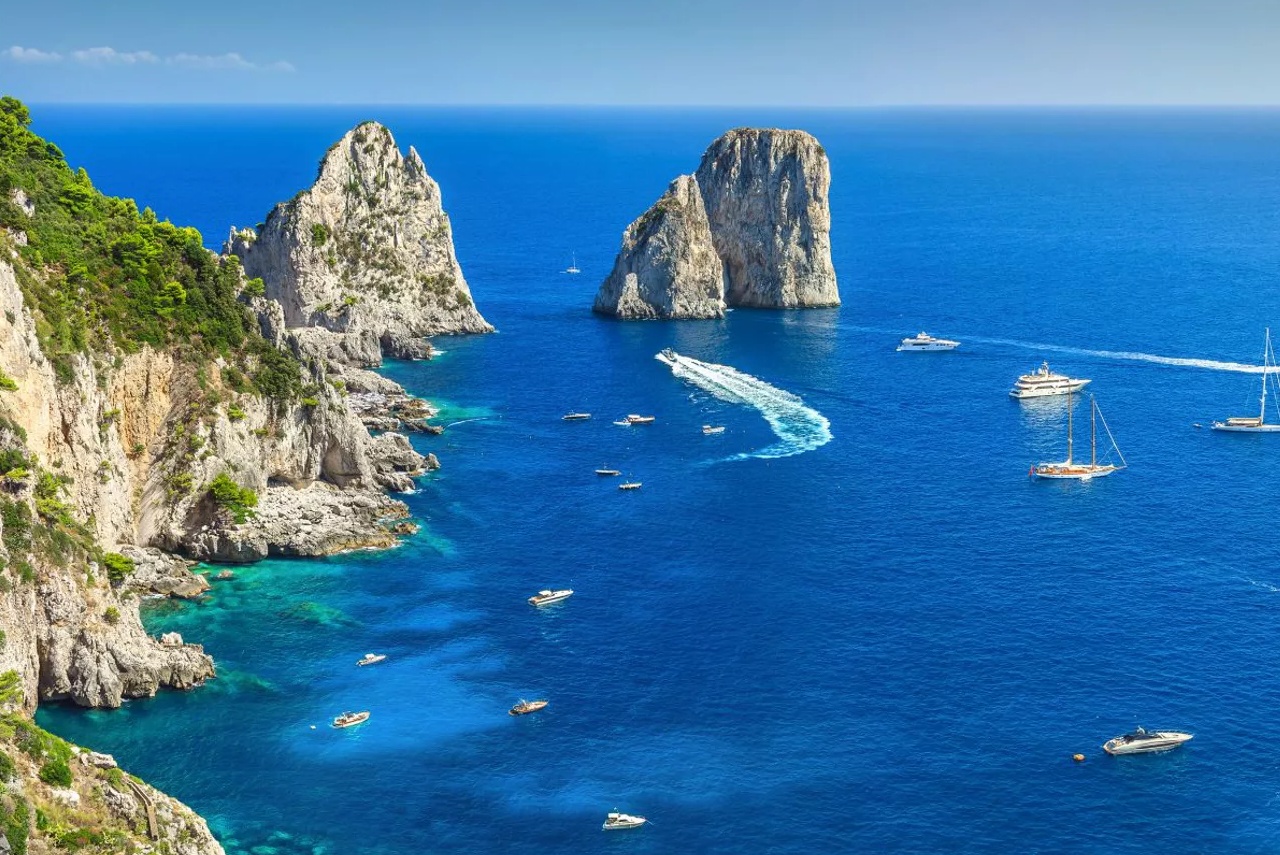The island is, unlike the nearby Ischia and Procida, of karst origin. Initially it was joined to the Sorrento Peninsula, only to be partially submerged by the sea and then separated from the mainland, where the Strait of Bocca Piccola is located today. Capri has a complex morphological structure, with peaks of medium height (Monte Solaro 589 m and Monte Tiberio 334 m) and vast internal plateaus, among which the main one is called "Anacapri". The coast is indented with numerous caves and coves that alternate with steep cliffs.
The caves, hidden under the cliffs, were used in Roman times as nymphaeums for the sumptuous villas that were built here during the Empire. The most famous is undoubtedly the Blue Grotto, where magical light effects were described by many writers and poets. Characteristic of Capri are the famous Faraglioni, three small rocky islets not far from the shore which create a scenographic and landscape effect; names have also been attributed to them to distinguish them: Stella for the one attached to the mainland, Faraglione di Mezzo for the one between the other two and Faraglione di Fuori (or Scopolo) for the one furthest from the island. The island preserves numerous animal and plant species, some endemic and extremely rare, such as the blue lizard, which lives on one of the three Faraglioni. The vegetation is typically Mediterranean, with a prevalence of agaves, prickly pears and brooms.
There are no longer any sources of drinking water on Capri and the water supply is guaranteed by submarine pipelines from the Sorrento peninsula. Electricity is supplied by a private company on site. The main inhabited centers of the island are Capri, Anacapri, Marina Grande while the other marine side of Capri, Marina Piccola, is less inhabited and even more subject to the phenomenon of building speculation which has affected the whole island from the early eighties to today.
Capri excursions
Contact Uspositano transfer

